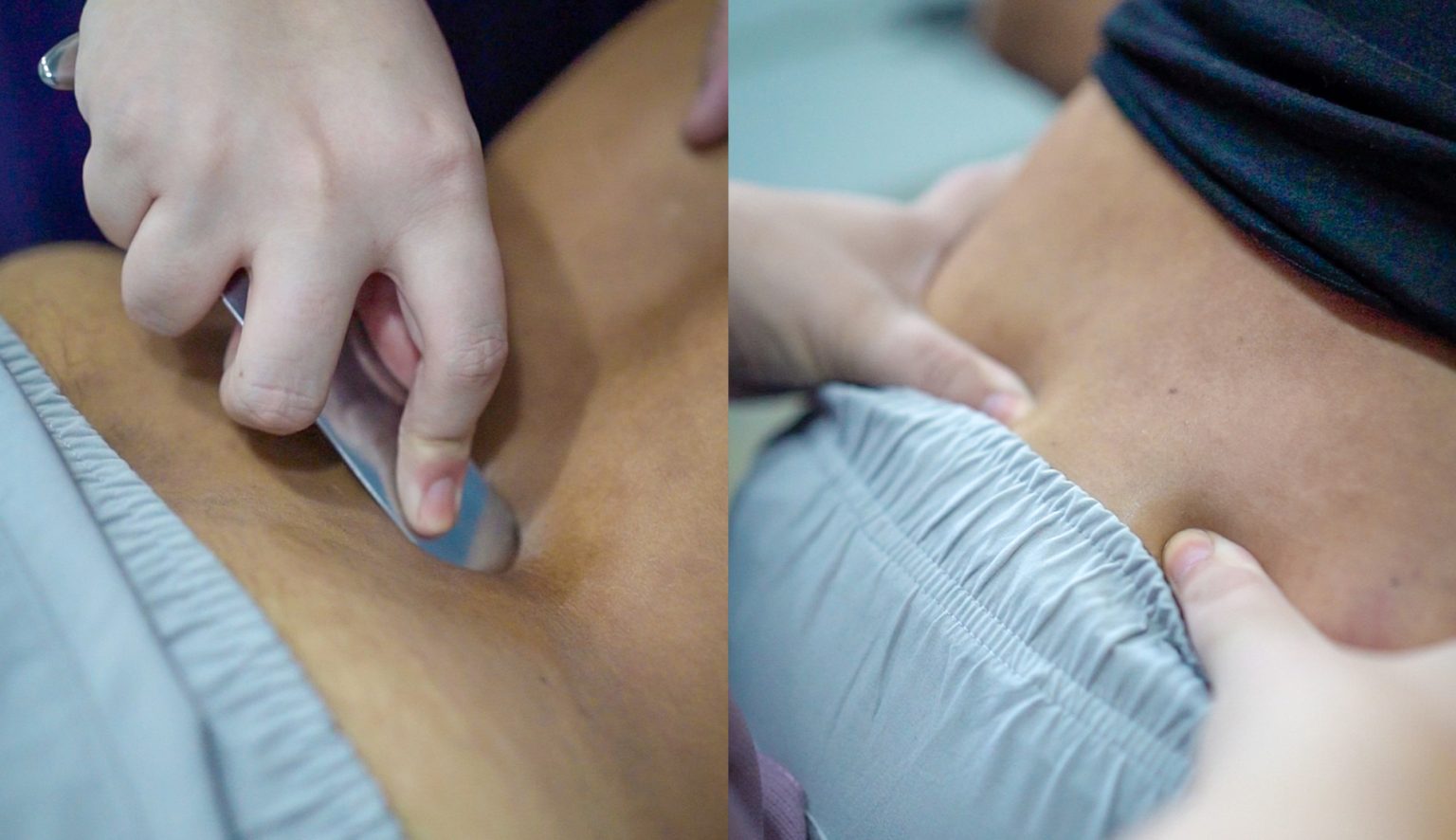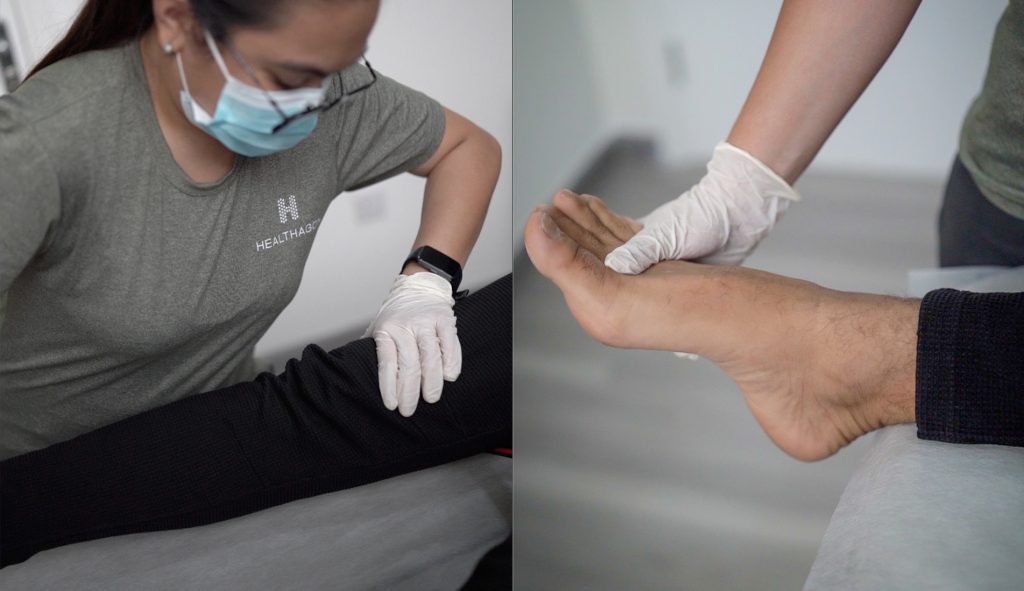WhyPhysiotherapy At Healthagon
Here at Healthagon, all our physiotherapists begin with a detailed assessment to personalize your treatment program and ensure you are given the right therapies appropriate to your medical state. After your session or sessions, you may enter the rehabilitation area in which you will finalize your recovery. Here you strengthen and stretch your muscles which will increase your range of motion, blood flow and help you feel less discomfort. Our physiotherapists will track your progress and motivate you to reach your personalized end goal
PhysiotherapyAll You Need To Know
Physical therapy, where science and well-being meet alternative medicine. Physiotherapy is a diverse range of treatments from rehabilitation to prevention. Its main goal is to maintain and maximize the body’s physical potential. In cases of injury, illness or disability, physical therapy promotes growth and helps restore your movement and range of motion with respect to your health status. It is a modern holistic approach that merges technology, traditional medicine and well-being.

Why Physiotherapy ?
Patients build independence and confidence without the excessive use of medication and surgery. Physical therapy, a degree-based healthcare profession. Physical therapists (PT’s) are specialized in the anatomy of the body, its function and its movement. Physiotherapists are trained to work with — infants to seniors — whose physical function is dependent on many factors such as: Chronic conditions, environmental factors, aging, weight issues, disease and injury.

What Can Physiotherapy Treat?
Neurological : Parkinson’s disease, stroke, sclerosis, dizziness, vertigo, and imbalance.
Neuromusculoskeletal : Back pain, neck pain, Frozen Shoulder, sport injuries, arthritis, rotator cuff, carpal tunnel
syndrome, osteoarthritis, rheumatoid arthritis, psoriatic arthritis, gout, spondylarthritis and TMJ disorder.
Musculoskeletal : Lower back pain, shoulder pain, golfers elbow, tennis elbow, pelvic floor
conditions, sports injuries, running injuries, sarcopenia, connective tissue, Back pain, neck pain, sport injuries, arthritis, rotator cuff, carpal tunnel
syndrome, osteoarthritis, rheumatoid arthritis, psoriatic arthritis, gout, spondylarthritis and TMJ disorder.Cardiovascular : Chronic heart disease and rehabilitation after heart surgery.
Respiratory : Asthma, cystic fibrosis, chronic obstructive pulmonary disease.
Physical Therapy Can Improve Your Body’s
- Balance & Coordination
- Physical Strength
- Pain Management
- Posture Improvement
- Restore Movement
- Increase Flexibility and Range of Motion
- Maintain Athletic Consistency
- Balance & Coordination
- Physical Strength
- Pain Management
- Posture Improvement
- Restore Movement
- Increase Flexibility and Range of Motion
- Maintain Athletic Consistency
Our expertise
Variations Of Physical Therapy Treatments & How They Work
Acupuncture Therapy
Treats the pathway of pain by needling in an area different from the trigger point. Effective in treating tension headaches, repetitive chronic disorders or any muscular related pain.
Aquatic therapy
Hydrotherapy is practiced in a pool of water, commonly warm water to help the muscles relax. It is great for patients who experience difficulty in exercising due to weight-bearing pain. It increases flexibility and reduces joint pain and swelling.
Dry needling
A therapeutic remedy that requires a certification to perform. An intramuscular stimulation focused on relieving trigger points for pain relief. As the needles get placed, tightness and spasms are alleviated; decreasing recovery period.
Edema control
Dropsy is achieved when a patient is moving, to move the extra fluid (which causes swelling) to migrate from the patient’s limbs back to their heart.
Electrical stimulation
Electrotherapy is used to strengthen muscles, improve blood circulation and block pain signals. It uses pulses to force the muscle to contract, in increasing muscular endurance.
Heat and cold therapy
In case of any muscular stiffness or tightness, heat and ice therapy are great options for inflammation, fatigue control and soreness. Know when you should use heat/ice therapy; avoid warm compresses after workouts as it may increase inflammation.
Floor exercises
Carrying out these exercises in a consistent manner will help the patient with stability, independence and strength, especially for patients with orthopedic related issues.
Manual therapy
The physiotherapist will manually treat or massage your injuries without the use of technology. It decreases the tension and pain built up and increases blood flow.
Motion or gait training
Motion training is generally done after joint replacements or overuse injury. It eliminates future limitations and restores movement. This training can also be used from those who suffered neurological trauma inhibiting proper movement such as walking, extending the knee or hip.
Stabilization and balance training
In vestibular therapy we focus on strengthening and relieving pain in the joints, knee, ankle and foot. Balance training is effective in increasing control and strength in weak muscles which will decrease risk of fall and injury.
Ultrasound Therapy
A technique designed for pain management and relief. It achieves results by deep heating strains, sprains or tendonitis.
Weight training
Weight training is often seen paired in treatments for osteoporosis patients (weakened bones). Weight training can increase bone density decreasing chances of a fracture when patient fall or experience accidents. It also strengthens muscles, which helps with your balance.

